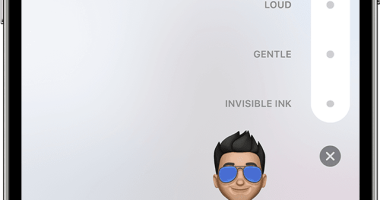
AT&T’s WarnerMedia is reportedly close to securing J.J. Abrams’ Bad Robot Pictures in a $500 million exclusivity deal, according to The Hollywood Reporter, The New York Times, Deadline, The Los Angeles Times, and others.
Bad Robot Pictures and Abrams, which have produced television shows under the Warner Bros. TV label since 2006, were being courted by nearly every major player in the entertainment space over the last six months. Apple, Comcast, Netflix, Sony Entertainment and Amazon all reportedly held deals with Abrams, according to the Reporter. Aspects of the deal are still uncertain — including whether or not Abrams will be allowed to direct films for competitors, which was a clause in his previous deal. That’s why he could return to direct Star Wars: Rise of Skywalker for Disney, out this year.
What the deal will give AT&T and WarnerMedia is a first look deal at anything Bad Robot produces, according to The New York Times. The deal covers “movies, television shows, video games, consumer products, music and digital content for a WarnerMedia streaming service set to arrive early next year,” the Times reports. WarnerMedia is also in the process of taking over Bad Robot’s exclusive film contract with Paramount Pictures (where Abrams produced and directed several Star Trek films).
Abrams’ $500 million deal is just a sign of where many companies, including predominantly streaming services, are heading as the “streaming wars” gear up. Netflix paid handsomely for multi-year deals with Grey’s Anatomy creator Shonda Rhimes and American Horror Story creator Ryan Murphy at $100 million and $300 million respectively. Warner Bros. TV also paid $400 million to Greg Berlanti, the man who concocted the Arrow Universe for The CW, to keep his contract exclusive.
As more shows and films enter the playing field, more streaming services are going to seek out their own version of a Game of Thrones or Stranger Things — one major show to pull in subscribers. Abrams’ Bad Robot is currently working on the third season of HBO’s Westworld (HBO is a subsidiary of WarnerMedia), and it’s fair to assume that will continue under the agreement because it’s a WarnerMedia property.
Another question is whether this move will make AT&T shareholders happy, which could affect the company’s ability to make other such deals and purchases. Multiple reports about investor concerns over AT&T’s WarnerMedia plan have come out over the last several months, as analysts worry about AT&T having too many balls to juggle. The company is currently $171 billion in debt, which CEO Randall Stephenson says will return to normal levels by 2022. Wells Fargo lead analyst Jennifer Fritzsche wrote in a 2018 report that “we remain somewhat concerned about how AT&T will prioritize its near-term uses of cash.”
Other analysts are concerned about WarnerMedia’s ability to create original content that will bring subscribers in — and keep them. WarnerMedia has an extensive catalogue of movies and shows, including Friends, a show that Netflix paid $100 million to keep for one year, but there’s concern over WarnerMedia’s ability to produce that original content.
Investing $500 million into Bad Robot and Abrams may be one way to quell those concerns, but it’s a large number — more than any of the aforementioned companies has paid for a single creative individual at this point. The company also recently signed lucrative deals with Mindy Kaling (The Mindy Project) and Ava DuVernay (When They See Us). The company is reportedly trying to secure a new deal for Big Bang Theory creator Chuck Lorre, whose deal with Warner Bros. TV ends in 2020.
WarnerMedia is expected to launch its subscription streaming service this fall, and “keeping Abrams in the fold was considered a high priority for the independent studio,” according to the Reporter. Although there isn’t any confirmed launch date or pricing, it’s expected to cost between $16 and $17 a month. That puts it on the higher end of streaming service costs, but it will include a subscription to HBO Now, which is currently $15.
This article is from The Verge








